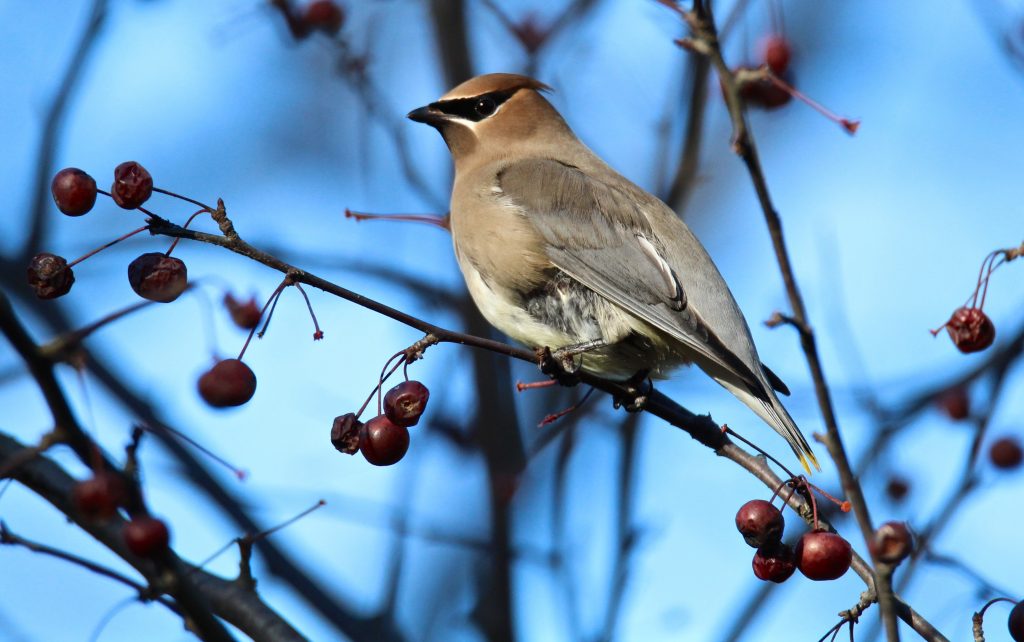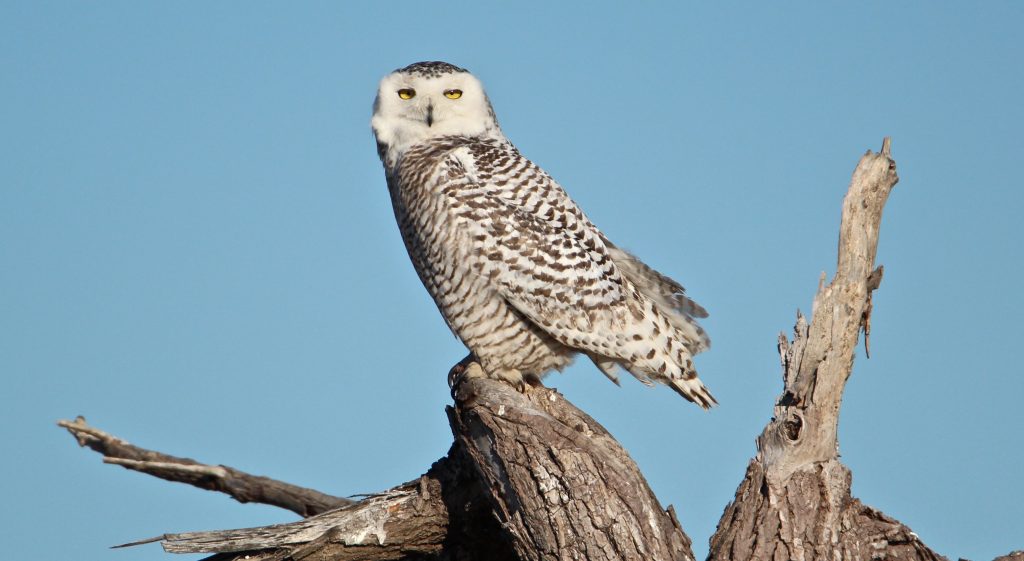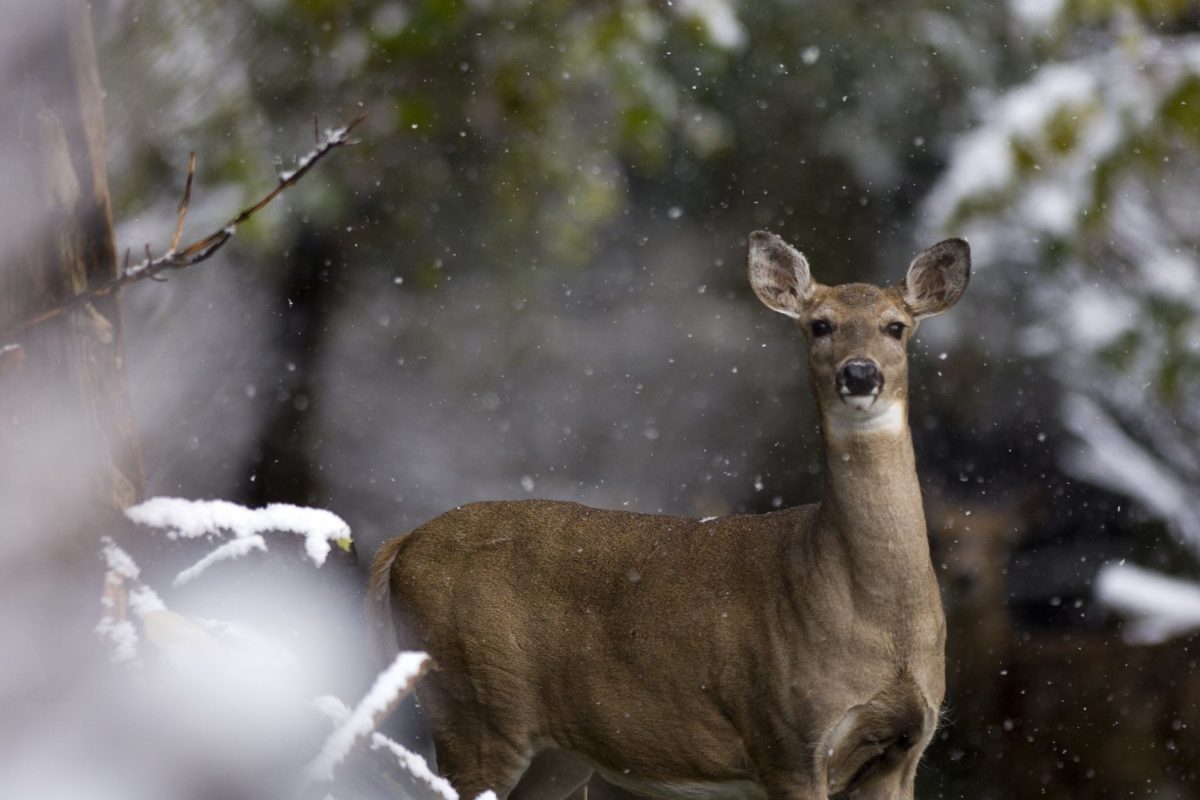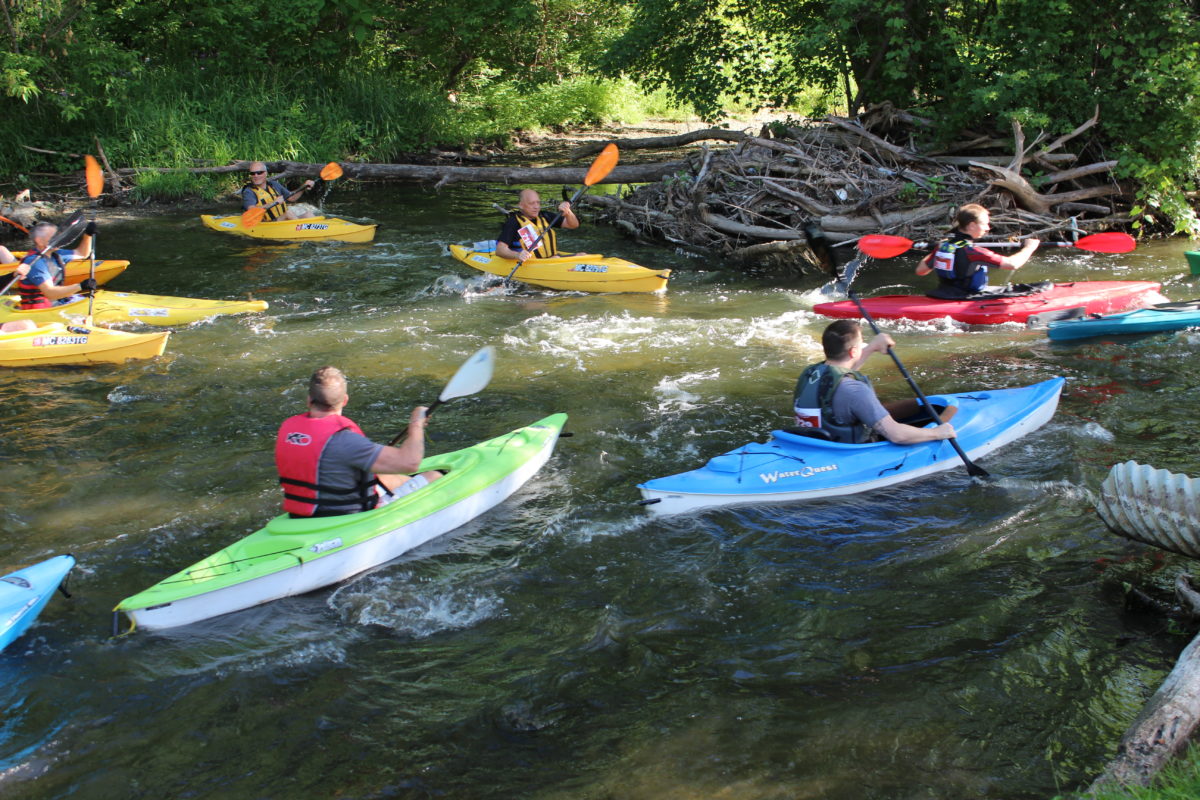Cabin fever setting in? Then bundle up, grab your binoculars and head outside for some winter bird-watching.
“The great thing about the Detroit area is there’s actually a lot of cool winter birding to do,” said Bailey Lininger, Detroit Audubon program coordinator. “It’s just as busy of a season for birders as the spring and the fall.”
That’s because Southeast Michigan, especially areas near western Lake Erie, the Detroit River and Lake St. Clair, is one of the most important areas in North America for migrating birds, according to the Michigan Department of Natural Resources.
Billions of birds migrate through the region each spring and fall. Many of those species that make the autumn trek from Canada and the Arctic often stay on lakes and rivers in relatively balmy Michigan during the long winter months.
“Many birds migrate due to food scarcity in their breeding ranges, so they come south to spend the winter,” said Holly Vaughn, DNR wildlife communications coordinator.
But a milder winter means it’s anyone’s guess which bird species you might find outdoors.
“When the water is open, the Detroit River, Lake St. Clair and western Lake Erie can host huge congregations of diving ducks, including canvasbacks, scaup and redheads,” Vaughn said.
The Great Lakes shoreline can be great for waterfowl viewing. Long-tailed ducks, common mergansers, redheads, scaup, buffleheads and goldeneyes are usually plentiful. Farm fields can also be a good spot to spy winter birds like snowy owls, snow buntings, Lapland longspurs and rough-legged hawks, Vaughn said.
Though many native birds leave Michigan for warmer climates in the winter, some species stick around and are well-adapted to the cold weather. Seed and berry eaters tend to stay in Michigan, along with birds of prey that eat small mammals; Insect eaters generally leave the state because prey isn’t available in the wintertime.
Birds combat the cold temperatures with built-in warming mechanisms: Downy feathers that insulate their bodies from the cold and feet and legs with a countercurrent, heat-exchange system.
“Blood vessels going to and from their feet are so close to one another that they warm the cold blood returning to the body, preventing the bird from getting chilled,” said Erin Rowan, MI Birds program associate for Audubon Great Lakes. “It also cools the warm blood going to their feet, which actually lowers heat loss in the bird’s feet.”

The Michigan Wildlife Council is dedicated to increasing public understanding of the important role wildlife management plays in conservation of the state’s natural resources. That work includes sharing how careful regulations are in place to ensure that wildlife populations are sustainable and nonendangered and remain in balance with their habitats and other species.
Public management of Michigan’s wildlife and natural resources is primarily funded through sales of hunting and fishing licenses and equipment, not state taxes.
While hunting may seem at odds with birding, it’s a crucial part of the state’s wildlife management efforts.
“The positive effects of hunting can be felt by every Michigan resident,” Pedigo said. “By helping to ensure our forests, waters and wildlife are clean and abundant, we can all enjoy Michigan’s great outdoors to the fullest.”
Bird-focused wildlife conservation takes many forms in Michigan.
Since 1991, Michigan has cooperated with other states, the U.S. Fish and Wildlife Service, Canadian provinces and the Canadian Wildlife Service to conduct aerial surveys of wintering ducks and geese. This survey is commonly referred to as the Mid-Winter Waterfowl Survey.
The survey has been especially important for evaluating waterfowl populations, monitoring winter migratory patterns and planning habitat management for these species. Population estimates are needed to establish annual waterfowl hunting season frameworks for the Mississippi, Central and Pacific flyways.
Throughout the year, the DNR, sportsmen, sportswomen and conservationists plant fruit trees, berry-producing shrubs and crops on state game and wildlife areas so that birds have plenty to eat throughout the winter.
“We do manage all year because of the need for habitat to be available in the winter for birds who stay in Michigan, as well as those who are passing through while migrating,” said Jennie Braatz, Detroit River International Wildlife Refuge naturalist.
“Bird-watching in the winter is a great way to get into the game,” she added. “You can visit our wildlife refuge, a county park, a city park or just look in your own backyard. Just get outside and enjoy.

Get outside and take a peek
Because Southeast Michigan is a known winter haven for birds of most feathers, birding enthusiasts host outings throughout the season. (See accompanying story for a list of upcoming events.) Most events are open to seasoned and novice birders alike.
“Winter birding can really show you a side of the natural world that you may not have seen before,” Lininger said.
Winter birding does take some preparation to stay safe and warm. Here are some suggestions:
- Stay warm. Dress for cold temperatures by wearing layers of clothing, winter boots and gloves.
- Don’t forget your camera, binoculars and field guide. Because so many species live in and visit Michigan, a good field guide can help you identify what you’re seeing.
- Tag along. Join in on an organized bird-watching outing. Birders love to share their expertise with newcomers.
Bountiful birding
If you’re unsure where to enjoy birding this winter, plenty of organized events and outings are available in Southeast Michigan. Here are just a few:
Chickadee Chowdown
Jan. 27 – 1-2 p.m. Feb. 24 – 1-2 p.m.
Where: Kensington Metropark Nature Center, 4570 Huron River Parkway, Milford
Cost: $3 child; $5 adults. Preregistration is encouraged at 810-227-8917. A Metroparks vehicle permit is required for entry.
Details: At Kensington Metropark Nature Center, a variety of winter songbirds will eagerly fly to your hand for seeds. Learn how to recognize the birds you’ll see during this one-hour program. Then take a short, guided walk along the nature trails to meet your new feathered friends. Organizers provide birdseed. All ages are welcome. Dress for the weather.
Elmwood Cemetery Walk
Feb. 1 – 9-11 a.m.
Where: Elmwood Cemetery, 1200 Elmwood Ave., Detroit
Cost: Free, but registration is appreciated at Detroit Audubon
Details: This is one in a series of walks exploring the birds, unique landmarks and history of this 86-acre cemetery. Designed by renowned landscape architect Frederick Law Olmsted and dedicated in 1846, the cemetery provides a unique opportunity for beginning birders, young birders or anyone just trying to get outside and explore a new part of the city.
Winter Birding on Belle Isle
Feb. 2 – 9-11 a.m.
Where: Meet in Belle Isle Nature Center parking lot, 176 Lakeside Drive, Detroit
Cost: Free, but registration is appreciated at Detroit Audubon
Details: Join the Detroit Audubon during Shiver on the River for a car caravan field trip around Belle Isle. Attendees will look for winter water birds, eagles and many other winter residents of Belle Isle State Park.
Shiver on the River
Feb. 2 – 10 a.m.-3 p.m.
Where: Belle Isle Park, Detroit
Cost: Free
Details: Take a trip to Belle Isle in downtown Detroit for this family event hosted by the Friends of the Detroit River. Along with a variety of nature-themed displays and activities throughout the island, there will be opportunities for self-directed bird-watching walks. More information is available at Friends of the Detroit River.
Winter Birding
Feb. 3 – 10 a.m.-noon
Where: Hudson Mills Metropark Activity Center, 8801 N. Territorial Road, Dexter
Cost: $5. Registration encouraged at 734-426-8211. A Metroparks vehicle permit is required for entry.
Details: Join interpreters to find some of the hardier bird species that decided to stay in Southeast Michigan for the winter. Dress for the weather. No birding experience necessary. All ages are welcome.
Tundras & Snowies
Feb. 11 – 10 a.m. and 2 p.m.
Where: Lake Erie Marshlands Museum, 32481 W. Jefferson Ave., Brownstown
Cost: $3 children; $5 adults. Registration is encouraged at 734-379-5020. A Metroparks vehicle permit is required for entry.
Details: While many birds flee the continent during the winter months, a few call Southeast Michigan home during the cold weather. Join Lake Erie Metropark organizers for a look at two winter visitors: The snowy owl and tundra swan.
Bird Walk at Beaudette Park
Feb. 16 – 10 a.m.
Where: Beaudette Park, 786 Orchard Lake Road, Pontiac
Cost: Free
Details: This annual bird walk sponsored by the Macomb Audubon Society always attracts a great crowd for exceptional winter birding.
Winter Waterfront Walk
Feb. 23 – 9-11 a.m.
Where: Cullen Plaza, 1340 Atwater St., Detroit
Cost: Free, but registration is appreciated at Detroit Audubon
Description: Join the Detroit Audubon and Detroit Riverfront Conservancy to explore the wintry side of the Detroit River with a naturalist-led walk. The outing begins at Cullen Plaza to explore the wetlands and learn about the wildlife that call the Detroit River home all year long. Attendees will then hop in their cars and head to Gabriel Richard Park to check out the Detroit Audubon birding interpretive station. Hot beverages and light snacks will be provided.
Owl Prowl March 9 – 7-10 p.m.
Where: Meet at St. James Episcopal Church, 25150 East River Road, Grosse Ile
Cost: $10 for Detroit Audubon adult members; $3 for Detroit Audubon youth (under 18) members; $12 for adult general admission; $4 for youth (under 18) general admission. Visit Detroit Audubon to register.
Details: The evening begins with a brief slide program at the church about owls. Great horned owls will have been nesting since early February, barred owls will just be starting and screech owls will be getting ready to nest. Since owls are defending territories, playing an owl tape or imitating their calls will likely bring them in where they can be seen by lantern light. Headlamps or flashlights are recommended.



